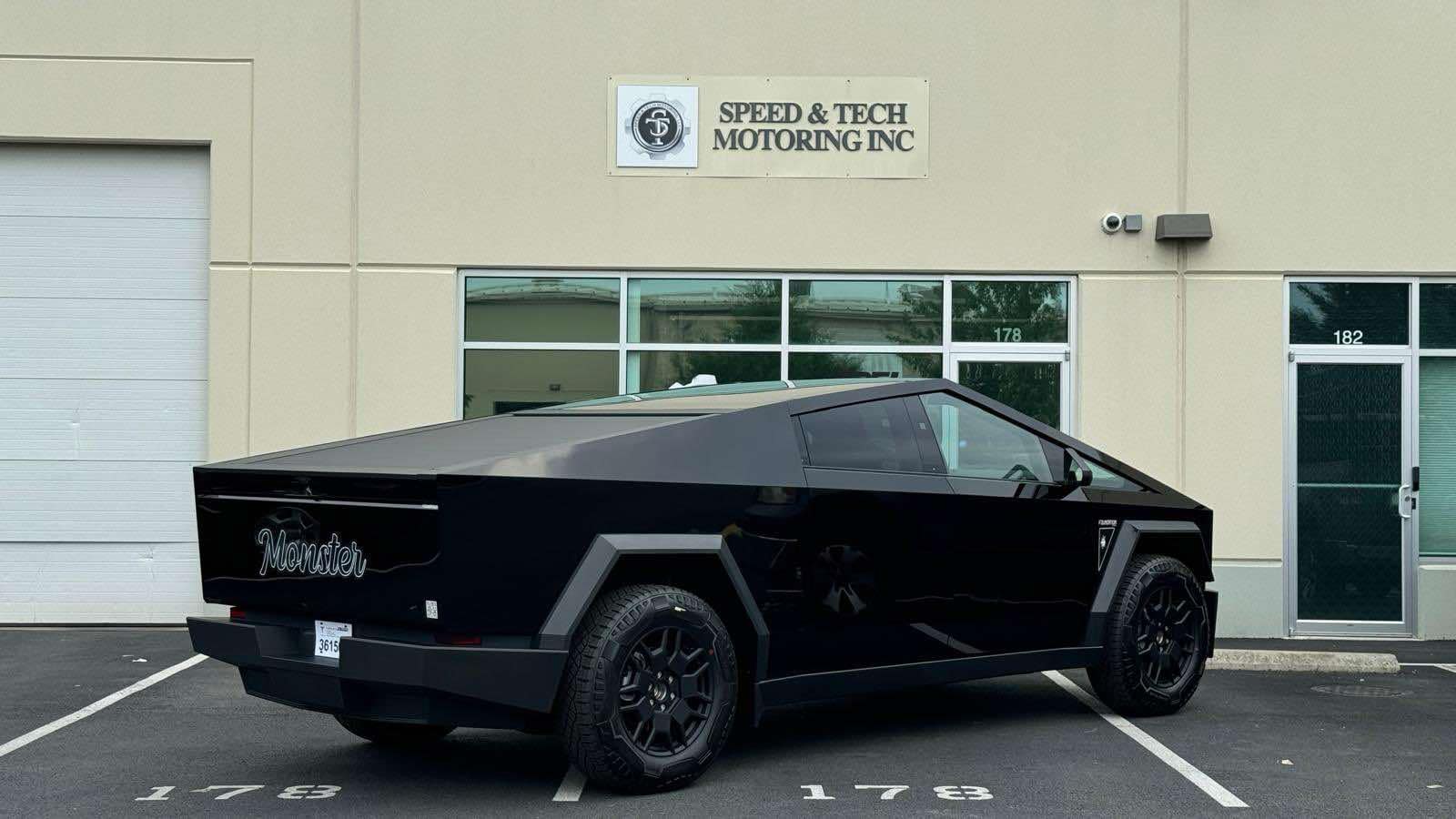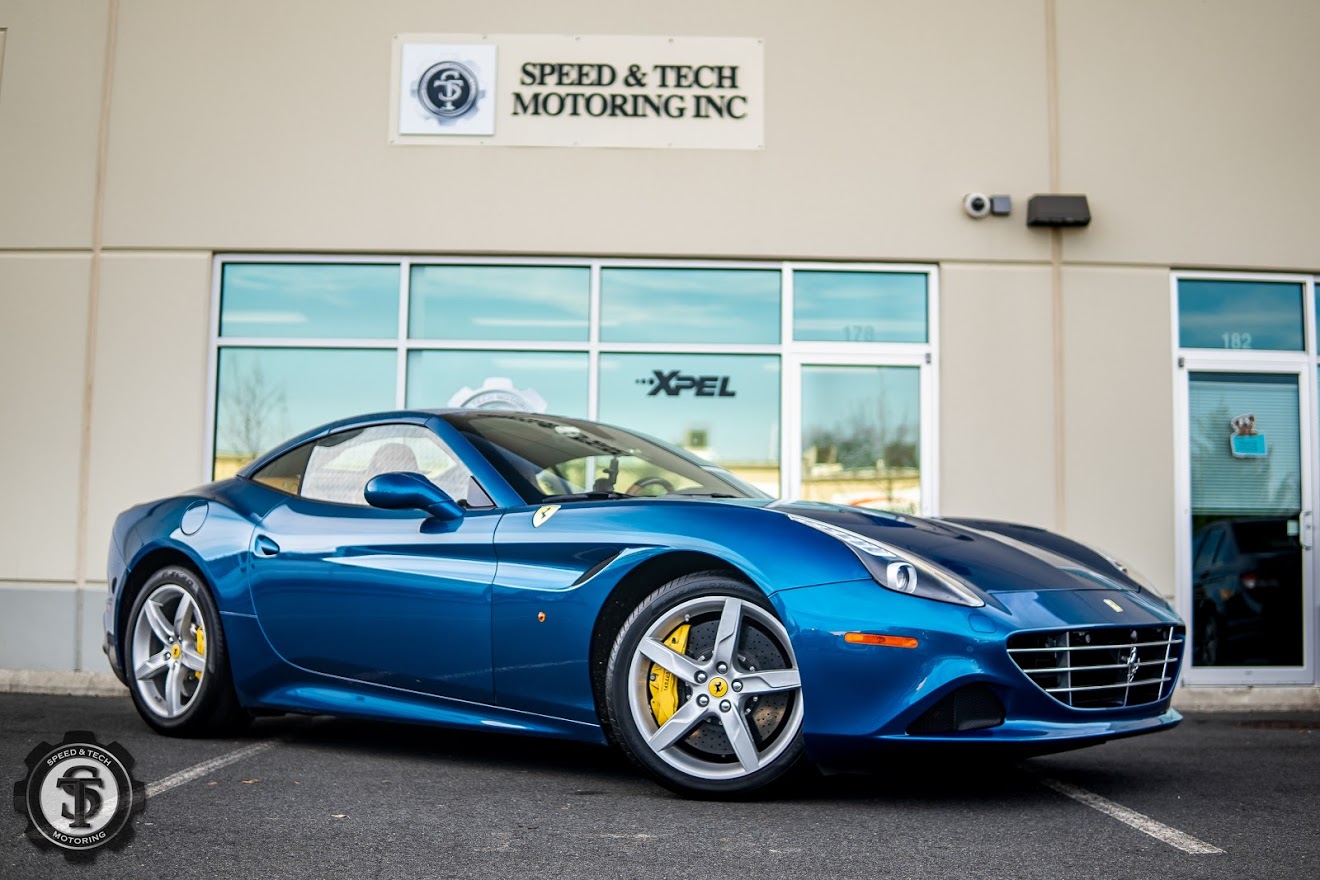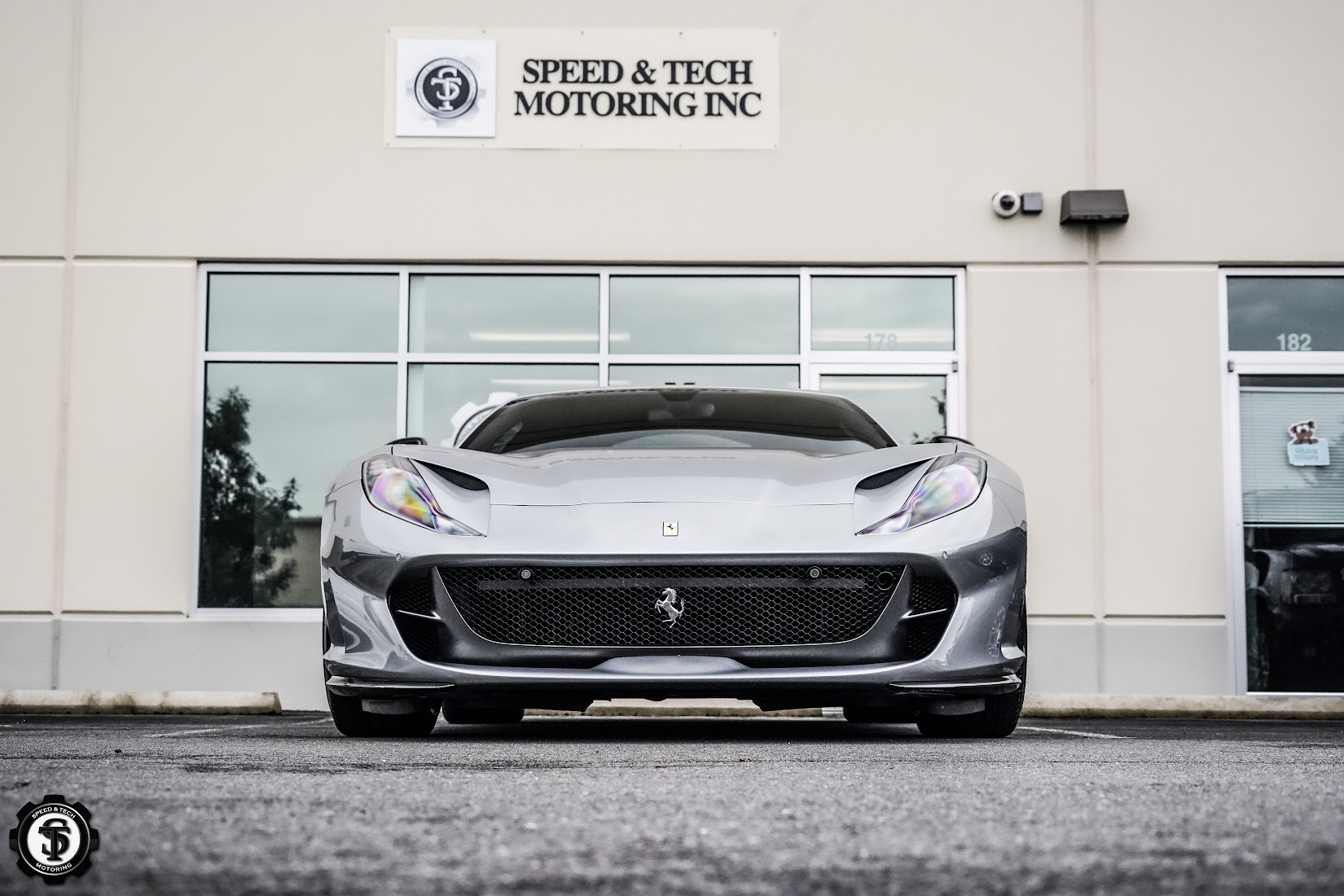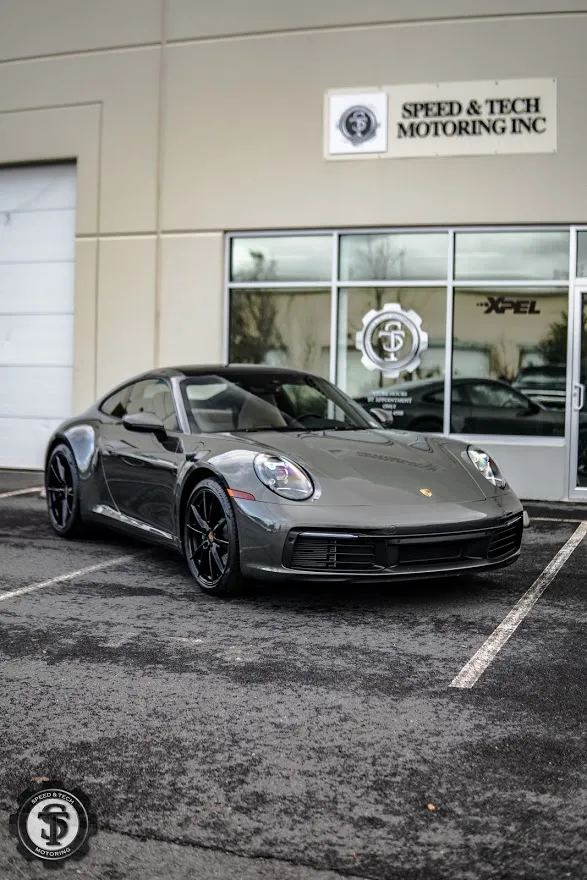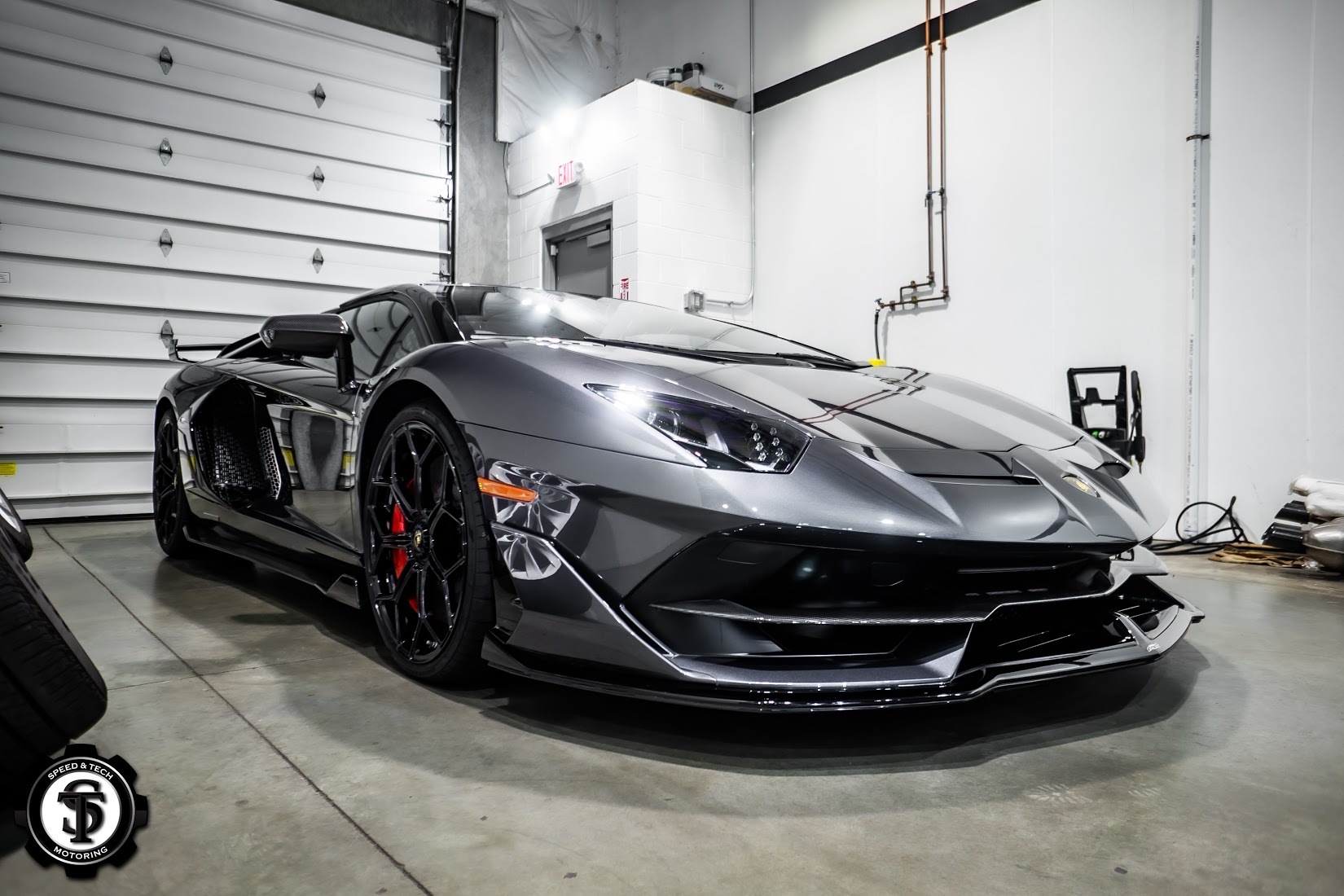Virginia winters can be brutal on luxury vehicles. Road salt damage affects paint permanently. Ice and snow create harsh driving conditions. Your BMW, Porsche, or Tesla faces serious threats every winter.
Road salt paint protection Virginia residents need becomes critical during winter months. Traditional car care methods cannot prevent salt damage effectively. Paint protection film provides the only reliable barrier against winter chemicals.
This guide explains how winter PPF benefits luxury vehicle owners throughout Virginia. You’ll discover why road salt damages paint. We’ll show how PPF prevents expensive winter damage. Learn to protect your investment during harsh winter conditions.
Understanding Virginia Winter Challenges
Virginia experiences varied winter conditions across the state. Northern Virginia faces the harshest weather. Road salt usage varies significantly by region. Understanding these patterns helps plan protection strategies.
Virginia Winter Weather Patterns
Northern Virginia sees the most severe winter conditions. Arlington, Fairfax, and Loudoun counties face frequent snow and ice. Temperature swings from freezing to mild create challenging conditions. Road salt usage reaches maximum levels in these areas.
Central Virginia experiences moderate winter weather. Richmond area sees occasional snow events. Salt application occurs during specific weather events. Road treatment varies by storm severity and duration.
Coastal Virginia faces unique winter challenges. Salt air combines with road salt for double exposure. Humidity affects salt adhesion to vehicles. Bridge and tunnel areas use heavy salt applications.
Road Salt Application in Virginia
VDOT uses over 400,000 tons of salt annually. Major highways receive priority treatment. Interstate 95 and 495 get heavy salt applications. Secondary roads follow based on traffic volume.
Pre-treatment begins before storms arrive. Brine solutions coat road surfaces early. Salt trucks prepare for predicted weather events. Multiple applications occur during extended storms.
Salt application continues after storms. Ice formation requires ongoing treatment. Temperature fluctuations demand repeated applications. Road safety takes priority over environmental concerns.
Temperature Cycling Effects
Virginia’s temperature swings accelerate damage. Freezing expands water in paint micro-cracks. Thawing allows deeper salt penetration. Repeated cycles worsen existing damage.
Daytime warming activates corrosion processes. Salt solutions become more aggressive when warm. Chemical reactions accelerate above freezing. Paint damage occurs rapidly during warm periods.
Nighttime freezing locks salt against paint. Frozen salt creates prolonged contact time. Ice prevents natural washing action. Concentrated salt solutions form overnight.
How Road Salt Damages Vehicle Paint
Road salt creates multiple types of paint damage. Understanding these mechanisms helps appreciate protection value. Each damage type requires different repair approaches.
Chemical Corrosion Process
Salt acts as a powerful corrosive agent. Sodium chloride breaks down paint chemistry. Clear coat deterioration begins immediately upon contact. Base paint layers face attack once clear coat fails.
Moisture accelerates salt corrosion. Humid conditions keep salt active longer. Wet salt penetrates deeper into paint. Dry salt becomes active when moisture returns.
pH changes affect paint stability. Salt solutions create alkaline conditions. Paint systems designed for neutral pH environments fail. Chemical bonds break down under alkaline attack.
Physical Paint Damage
Salt crystals create microscopic scratches. Wind-blown salt acts like sandpaper. Repeated exposure creates visible etching patterns. Clear coat loses optical clarity permanently.
Freeze-thaw cycles expand damage. Water in paint cracks freezes and expands. Repeated expansion widens existing damage. Original small chips become major defects.
Salt buildup creates staining patterns. Concentrated solutions leave visible marks. White residue remains after cleaning. Staining penetrates into paint layers.
Long-Term Paint Deterioration
Continuous exposure leads to paint failure. Multiple winter seasons accumulate damage. Paint loses adhesion to metal substrate. Complete refinishing becomes necessary.
Color changes occur gradually. Salt exposure fades paint colors. Metallic finishes lose sparkle and depth. Original appearance cannot be restored.
Surface texture changes permanently. Smooth paint develops rough texture. Gloss levels decrease significantly. Professional polishing cannot restore original finish.
Luxury Vehicle Vulnerabilities
Different luxury vehicles face varying degrees of winter damage risk. Paint systems and usage patterns affect vulnerability levels. Understanding these helps prioritize protection.
BMW Winter Paint Challenges
BMW paint systems vary by model year and color. Recent models use water-based paints that show salt damage easily. Darker colors like Jet Black and Carbon Black highlight salt residue immediately. Metallic finishes lose depth when salt etches the clear coat.
BMW M-series vehicles face extra exposure. Performance driving during winter months increases salt contact. Track events in winter conditions multiply damage risks. Special paint options cost significantly more to repair.
BMW X-series SUVs encounter unique challenges. Higher ride height doesn’t prevent salt spray damage. All-wheel drive systems get used more in winter conditions. Family hauling increases exposure to salt-treated roads.
Porsche Winter Vulnerability
Porsche sports cars sit low to the ground. 911 models catch more road spray than higher vehicles. Salt-laden slush hits body panels directly. Aerodynamic elements trap salt and debris.
Porsche Cayenne faces winter driving demands. Luxury SUV owners drive in all weather conditions. All-wheel drive capability encourages winter use. Increased exposure multiplies damage probability.
GT model vulnerability increases significantly. Track-focused vehicles see winter storage primarily. Even limited winter exposure can cause visible damage. Collector value demands perfect paint condition.
Tesla Electric Vehicle Winter Risks
Tesla paint requires special winter consideration. Softer paint shows salt damage more readily. Water-based paint systems react differently to salt exposure. Electric vehicle efficiency demands winter driving.
Model 3 sees daily winter commuting. High-volume sales mean more winter exposure. Daily highway driving increases salt contact. Soft paint shows damage after single winter seasons.
Tesla Supercharger networks encourage winter travel. Long-distance electric travel happens year-round. Highway salt exposure increases significantly. Charging stations often lack covered parking.
Ferrari and Lamborghini Winter Storage
Exotic vehicles typically avoid winter driving. Most owners store vehicles during harsh weather. Even brief winter exposure can cause permanent damage. Collector values demand perfect paint condition.
Climate-controlled storage prevents some damage. Indoor storage protects from direct salt exposure. Garage humidity still allows salt activation. Proper cleaning before storage becomes essential.
Winter car shows and events create exposure. Automotive events happen during winter months. Transport to indoor shows requires winter road travel. Single exposure events can cause visible damage.
Paint Protection Film Winter Benefits
PPF provides comprehensive protection against Virginia winter conditions. Multiple protective mechanisms work together. Understanding these benefits helps justify investment decisions.
Chemical Barrier Protection
PPF creates impermeable barrier against salt solutions. Road salt cannot penetrate quality protection film. Chemical reactions occur on film surface rather than paint. Paint remains completely protected from corrosive damage.
Hydrophobic properties shed salt water quickly. Water beads and rolls off protected surfaces. Salt solutions cannot establish prolonged contact. Natural washing action removes contamination effectively.
pH resistance prevents chemical damage. Quality PPF resists alkaline salt solutions. Film chemistry remains stable under harsh conditions. Protection performance doesn’t degrade with exposure.
Physical Impact Protection
Film absorbs salt crystal impacts. Wind-blown salt hits film instead of paint. Abrasive damage occurs to replaceable protection. Paint surface remains pristine underneath.
Self-healing properties repair minor damage. Light scratches from salt crystals heal automatically. Heat activation repairs surface damage. Protection maintains optical clarity throughout winter.
Thickness provides cushioning effect. Multiple film layers absorb impact energy. Paint receives no direct damage from debris. Protection value increases with film thickness.
Easy Cleaning Benefits
Salt residue removes easily from PPF. Simple washing eliminates contamination completely. No scrubbing or harsh chemicals needed. Regular maintenance preserves appearance.
Staining cannot penetrate film surface. White salt residue washes away completely. No permanent discoloration occurs. Original appearance returns with proper cleaning.
Professional cleaning restores like-new condition. Seasonal maintenance removes all winter contamination. Film surface returns to perfect clarity. Paint protection continues without degradation.
Virginia Regional Considerations
Different Virginia regions face varying winter protection needs. Salt usage patterns affect damage probability. Local conditions influence optimal protection strategies.
Northern Virginia Winter Protection
Heaviest salt usage occurs in NOVA region. Fairfax, Arlington, and Loudoun counties use maximum salt. Dulles Toll Road and I-495 receive heavy treatment. Protection becomes essential for daily drivers.
Sterling area sees particularly harsh conditions. Proximity to Dulles Airport increases chemical exposure. De-icing operations add to road salt damage. Local luxury vehicle density justifies professional protection.
Traffic density multiplies salt exposure. Stop-and-go traffic keeps vehicles in salt longer. Brake spray carries salt onto body panels. Parking lot salt accumulates on lower vehicle areas.
Central Virginia Winter Factors
Richmond area experiences moderate salt exposure. Interstate corridors receive priority treatment. Local roads get treated based on conditions. Protection value varies by driving patterns.
Temperature fluctuations create damage cycles. Freeze-thaw patterns accelerate corrosion. Mild periods activate salt solutions. Protection prevents damage accumulation.
Historic vehicle concentration requires special care. Classic car shows happen year-round. Museum events require winter transport. Even brief exposure threatens valuable vehicles.
Coastal Virginia Unique Challenges
Salt air combines with road salt for double exposure. Ocean proximity adds constant salt exposure. Road salt compounds existing corrosion risks. Year-round protection becomes necessary.
Bridge and tunnel salt usage increases exposure. Chesapeake Bay crossings use heavy salt applications. Extended exposure time during traffic delays. Protection prevents concentrated damage.
Military vehicle populations require protection. High concentration of luxury vehicles near bases. Deployment schedules may prevent proper winter care. Protection provides passive defense.
Seasonal Protection Strategies
Timing PPF installation and maintenance optimizes winter protection. Strategic planning maximizes protection value. Seasonal approaches address specific challenges.
Pre-Winter Installation Benefits
Fall installation prepares for winter damage. Clean paint provides optimal film adhesion. No existing salt damage complicates installation. Protection begins before first salt exposure.
Paint correction opportunity before protection. Summer damage gets corrected before winter. Perfect paint surface accepts film optimally. Investment timing maximizes protection value.
Inventory availability improves in fall. Less demand allows better scheduling. Premium film options stay available. Installation quality improves with reduced rush.
Winter Maintenance Requirements
Monthly washing removes salt accumulation. Regular cleaning prevents buildup damage. PPF-safe products protect film integrity. Proper technique ensures long-term performance.
Professional winter service provides deep cleaning. Expert cleaning removes stubborn contamination. Inspection identifies potential problems early. Maintenance preserves warranty coverage.
Undercarriage cleaning removes hidden salt. Salt accumulates in wheel wells and lower panels. Professional cleaning reaches protected areas. Complete cleaning optimizes protection value.
Spring Restoration Process
Detailed spring cleaning removes winter residue. Professional cleaning restores like-new appearance. Salt residue elimination prevents continued damage. Fresh appearance begins new season properly.
Inspection reveals any winter damage. Professional evaluation identifies issues. Early detection enables warranty claims. Prompt attention prevents problem escalation.
Protection preparation for summer conditions. Winter protection transitions to UV defense. Film condition assessment guides maintenance. Continuous protection ensures year-round value.
Cost Comparison: PPF vs Winter Damage
Understanding winter damage costs helps justify PPF investment. Real-world examples show protection value clearly. Numbers demonstrate clear financial benefits.
Typical Winter Damage Costs
Single season salt damage ranges $800-2,500. Minor etching requires professional polishing. Severe damage needs partial repainting. Color matching adds complexity and cost.
Multi-season damage requires complete repainting. Hood and front panel replacement costs $2,500-4,500. Color matching affects adjacent panels. Total refinishing approaches $8,000-12,000.
Luxury vehicle paint costs more to repair. BMW paint work starts at $1,200 per panel. Porsche special colors cost $1,500-2,000 per panel. Ferrari paint requires specialized expertise.
PPF Investment Comparison
Full vehicle PPF costs $4,200-6,500 for luxury vehicles. One-time investment provides 10+ years protection. No annual maintenance costs beyond normal washing. Investment pays for itself within 2-3 winters.
Partial PPF covers high-exposure areas for $1,800-2,800. Front-end protection stops most winter damage. Lower investment provides significant protection. Smart coverage guide maximizes value per dollar.
Installation timing affects total investment. New vehicle protection provides maximum value. Existing damage correction adds to total cost. Early protection prevents expensive repairs.
Long-Term Value Analysis
Protected vehicles maintain higher resale values. Perfect paint condition commands premium pricing. Buyers prefer documented protection history. Value increase justifies protection investment.
Protection prevents depreciation acceleration. Winter damage reduces values significantly. Poor paint condition affects buyer perception. Protection preserves investment value.
Insurance benefits may apply. Some insurers recognize protection value. Reduced claims frequency benefits rates. Protection prevents expensive claims.
Professional Installation in Virginia
Virginia’s winter conditions demand expert PPF installation. Local expertise ensures optimal performance. Professional quality withstands harsh winter conditions.
Virginia-Specific Installation Requirements
Humidity control during installation matters. Virginia’s variable humidity affects adhesion. Professional facilities maintain optimal conditions. Climate control ensures installation success.
Local temperature considerations affect timing. Cold weather impacts film flexibility. Heated facilities enable year-round installation. Professional control ensures quality results.
Experience with Virginia conditions matters. Local installers understand regional challenges. Salt exposure experience guides technique. Regional expertise ensures optimal protection.
Quality Standards for Winter Protection
Perfect adhesion prevents salt intrusion. Any gaps allow salt penetration underneath. Professional installation eliminates failure points. Quality control ensures complete protection.
Edge sealing becomes critical in winter. Salt solutions attack weak edges aggressively. Professional sealing prevents lifting. Proper edges ensure long-term performance.
Film selection affects winter performance. Premium films handle harsh conditions better. Quality materials justify higher investment. Professional guidance ensures optimal selection.
Warranty Considerations
Professional installation protects warranty coverage. Certified work ensures manufacturer support. Poor installation voids protection claims. Investment protection requires quality work.
Winter performance guarantees matter. Salt resistance should be explicitly covered. Film failure during winter demands replacement. Clear warranty terms protect investment.
Local service availability affects value. Nearby service enables quick response. Emergency repairs may be needed. Local support maximizes protection value.
Maintenance During Virginia Winters
Proper winter maintenance preserves PPF performance throughout harsh seasons. Regular care prevents damage accumulation. Smart maintenance maximizes protection value.
Winter Washing Techniques
Warm water removes salt effectively. Heat dissolves salt crystals completely. Cold water may not remove all contamination. Professional washing provides optimal results.
PPF-safe products prevent film damage. Harsh chemicals affect film performance. Salt-removing products must be compatible. Professional products ensure safety.
Pressure washing requires proper technique. High pressure can lift film edges. Proper angle prevents damage. Professional service ensures safety.
Weekly Maintenance Schedule
Monday assessment guides weekly care. Weekend driving creates salt accumulation. Early week evaluation identifies needs. Prompt cleaning prevents damage buildup.
Wednesday mid-week cleaning removes buildup. Heavy salt exposure requires frequent cleaning. Regular removal prevents concentration. Consistent care ensures protection.
Friday preparation for weekend use. Clean vehicle starts weekend properly. Fresh appearance motivates careful driving. Proper preparation optimizes weekend enjoyment.
Professional Winter Services
Monthly professional cleaning provides deep service. Expert techniques remove stubborn contamination. Professional products ensure compatibility. Quality service extends protection life.
Quarterly professional inspection identifies issues. Expert evaluation catches problems early. Early detection prevents major failures. Professional attention ensures warranty compliance.
Annual professional maintenance maximizes life. Comprehensive service restores like-new condition. Professional care ensures optimal performance. Investment protection requires expert attention.
Emergency Winter Damage Response
Despite PPF protection, emergency situations may occur. Quick response prevents permanent damage. Professional guidance ensures proper action.
Immediate Response Actions
Stop driving if severe damage occurs. Continued exposure worsens damage. Safe stopping prevents additional harm. Quick assessment guides next steps.
Photograph damage for documentation. Insurance claims require evidence. Warranty claims need proper documentation. Professional evaluation uses photos for assessment.
Contact professional service immediately. Expert guidance prevents wrong actions. Quick response may save protection. Professional help ensures optimal outcome.
Temporary Protection Measures
Cover damaged areas if possible. Temporary covering prevents additional exposure. Professional tape protects until repair. Quick action prevents escalation.
Avoid harsh cleaning attempts. Aggressive cleaning may worsen damage. Professional cleaning provides safe approach. Patient response ensures best outcome.
Document everything for claims. Insurance may cover emergency damage. Warranty claims require proper documentation. Complete records protect investment.
Professional Repair Options
Emergency repair services provide quick response. Professional service prevents additional damage. Expert repair restores protection quickly. Investment protection continues.
Temporary protection while awaiting repair. Professional covering maintains protection. Interim solutions prevent damage progression. Complete repair follows when possible.
Warranty coverage for winter damage. Legitimate failures receive warranty service. Professional assessment determines coverage. Proper claims ensure investment protection.
Frequently Asked Questions
How does road salt damage vehicle paint in Virginia?
Road salt creates chemical corrosion that breaks down paint chemistry. Virginia’s freeze-thaw cycles expand water in paint cracks, allowing deeper salt penetration. Salt acts like sandpaper when wind-blown, creating microscopic scratches. Temperature swings activate corrosion processes, causing permanent paint damage.
What are the main winter PPF benefits for Virginia drivers?
Winter PPF benefits include complete chemical barrier protection against road salt, self-healing properties that repair salt crystal scratches, and easy cleaning that removes salt residue completely. PPF prevents pH damage from alkaline salt solutions and maintains paint condition throughout harsh Virginia winters.
When should I install PPF for winter protection in Virginia?
Install PPF in fall before first salt exposure for maximum protection. Fall installation allows paint correction if needed and ensures protection begins immediately. Pre-winter installation avoids scheduling delays and provides complete season protection from the start.
How much does winter paint damage cost compared to PPF?
Single season salt damage costs $800-2,500 for repairs. Multi-season damage requires $8,000-12,000 for complete repainting. PPF costs $4,200-6,500 for full protection but lasts 10+ years. Protection pays for itself within 2-3 Virginia winters through damage prevention.
Which luxury vehicles need winter PPF protection most in Virginia?
BMW vehicles with soft water-based paint show salt damage easily. Tesla electric vehicles require winter protection due to soft paint and year-round driving. Porsche sports cars sitting low catch more road spray. All luxury vehicles benefit from protection in Virginia’s harsh winter conditions.
How often should I wash my PPF-protected vehicle in winter?
Wash weekly during active salt season to prevent accumulation. Professional monthly cleaning provides deep contamination removal. Clean immediately after major storms when salt usage peaks. Regular cleaning maintains protection performance and appearance.
Does PPF work in Virginia’s freeze-thaw conditions?
Yes, quality PPF performs excellently in Virginia’s temperature cycling. Film flexibility prevents cracking during freezing. Self-healing properties work when temperatures rise above 50°F. Professional installation ensures performance throughout Virginia’s varied winter conditions.
Can road salt damage PPF itself?
No, quality PPF resists road salt damage completely. Premium films withstand alkaline salt solutions without degradation. Salt crystals may scratch film surface, but self-healing properties repair minor damage. Film protects itself while preserving underlying paint.
What happens if PPF gets damaged during winter?
Professional repair services can fix minor PPF damage quickly. Warranty coverage may apply to winter damage depending on cause. Emergency response prevents additional damage while arranging repair. Temporary covering protects until professional service is available.
How long does winter PPF last in Virginia conditions?
Quality PPF lasts 10+ years in Virginia winter conditions. Harsh weather doesn’t reduce protection lifespan significantly. Professional installation and maintenance maximize durability. Warranty coverage typically spans 10 years regardless of climate exposure.
Is partial PPF enough for Virginia winter protection?
Partial PPF protects high-impact areas effectively but leaves other surfaces vulnerable. Full coverage provides complete winter protection for maximum value. Front-end packages work for budget-conscious owners but offer limited protection. Consider exposure levels when choosing coverage.
What maintenance products are safe for winter PPF care?
Use PPF-safe cleaning products designed for protected surfaces. Avoid harsh salt-removing chemicals that damage film. Professional products ensure compatibility and effectiveness. Warm water and gentle cleaners remove salt safely without harming protection.
Conclusion
Virginia winter conditions create serious paint damage risks for luxury vehicles. Road salt paint protection Virginia residents need comes only from professional paint protection film. Traditional care methods cannot prevent chemical corrosion and physical damage.
Winter PPF benefits extend far beyond basic protection. Chemical barrier properties prevent salt corrosion completely. Self-healing technology repairs minor winter damage automatically. Easy cleaning removes contamination without damaging underlying paint.
Northern Virginia’s harsh conditions make protection essential for BMW, Porsche, Tesla, Ferrari, and Lamborghini owners. Sterling area vehicles face particularly challenging exposure from highway salt and airport chemicals. Professional protection becomes a wise investment decision.
Cost analysis clearly favors PPF investment over repeated winter damage repairs. Single season damage often exceeds partial protection costs. Multi-season accumulation creates expensive refinishing needs. Smart owners choose prevention over repair.
Professional installation ensures optimal winter performance. Local expertise understands Virginia conditions completely. Quality installation withstands freeze-thaw cycles and chemical exposure. Investment protection requires expert application.
Ready to protect your luxury vehicle from Virginia winter damage? Speed and Tech Motoring provides expert paint protection film installation designed for Virginia’s harsh winter conditions. Our certified technicians understand how road salt damages BMW, Porsche, Tesla, Ferrari, and Lamborghini paint systems.
Call Speed and Tech Motoring at (703) 565-4508 for your winter protection consultation and free estimate. Visit us at 23585 Overland Dr STE 178, Sterling, VA. Don’t let Virginia winters destroy your luxury vehicle’s paint – protect your investment before the next storm hits.
Your vehicle deserves professional winter protection. Start safeguarding your investment today.



